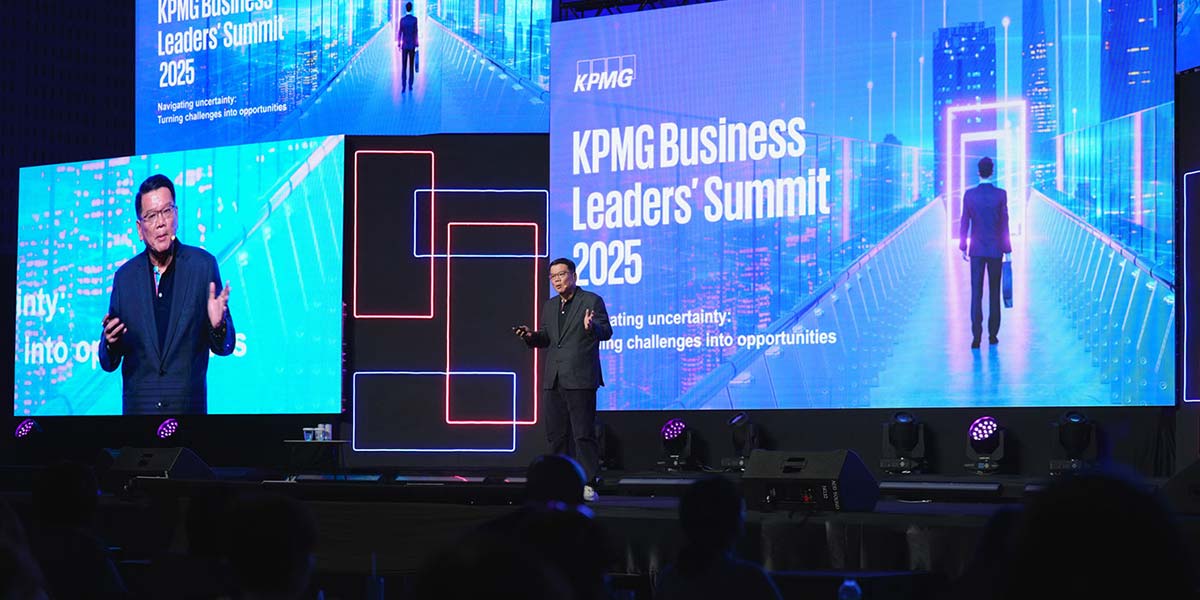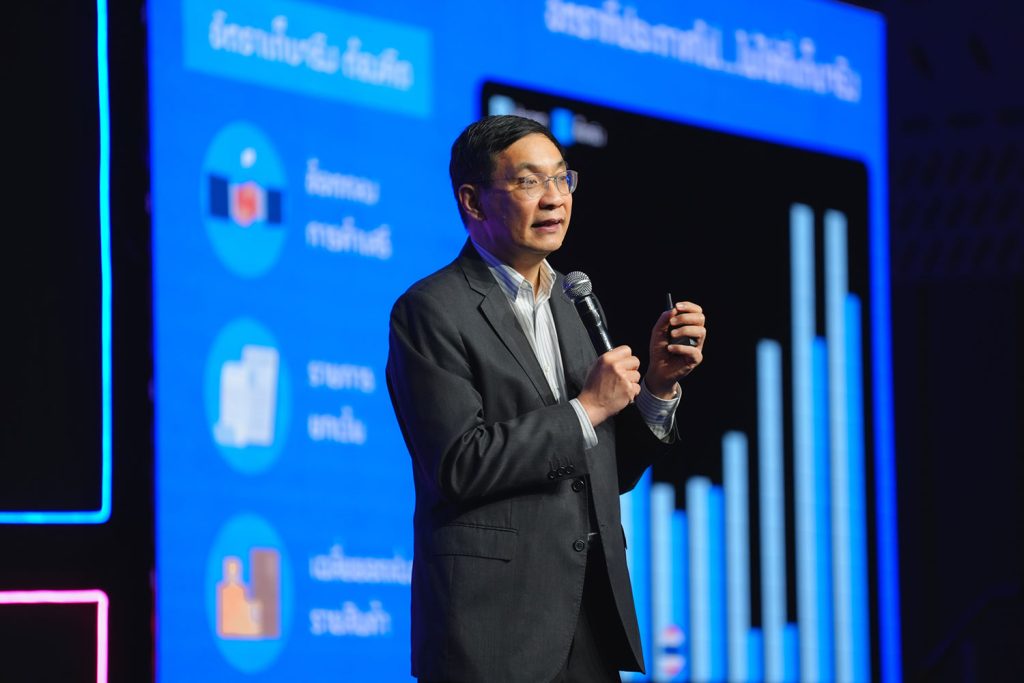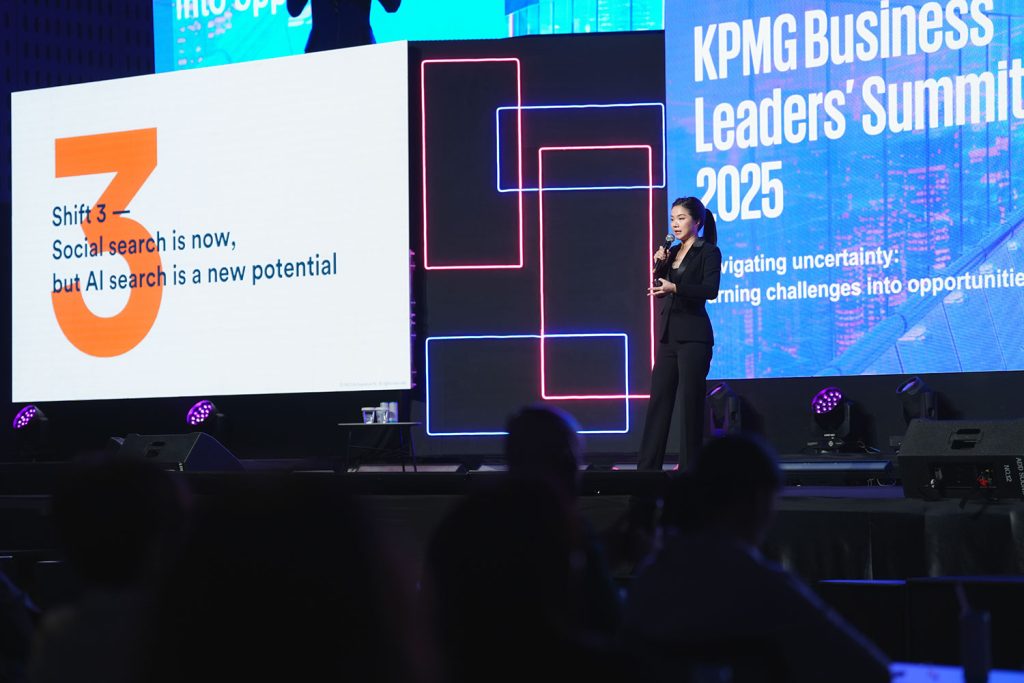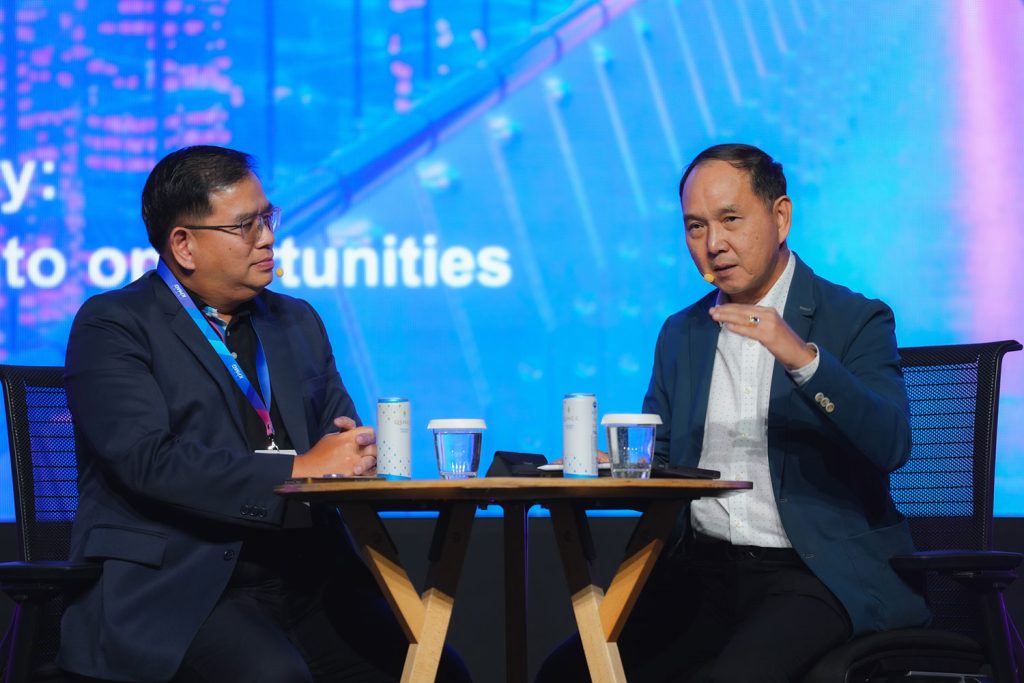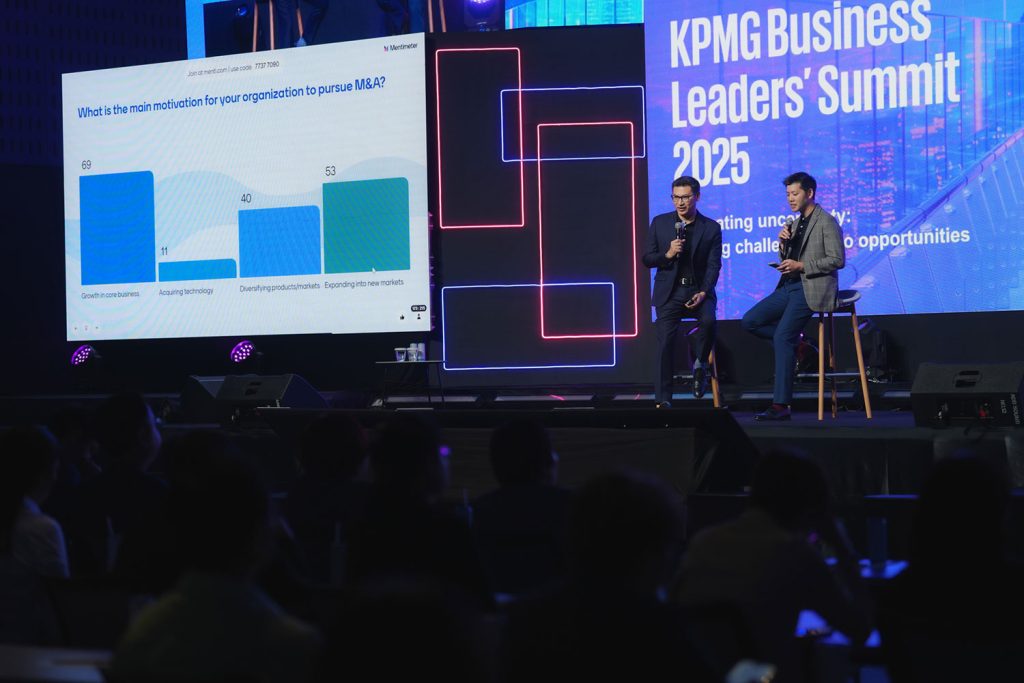KPMG in Thailand hosted its annual Business Leaders’ Summit, themed “Navigating Uncertainty: Turning Challenges into Opportunities.” Over 370 participants, largely representing senior executives and decision-makers from top Thai companies joined to explore innovative strategies for overcoming disruption and driving sustainable business growth.
The summit featured insights from KPMG experts and industry leaders on key topics including geopolitics, the Thai economy, supply chain resilience in the “glocalization” era, brand adaptation in rapidly evolving market, what’s next in technology and its implications for Thai business, business turnaround and value creation strategies, and mergers and acquisitions outlook.
Charoen Phosamritlert, Chief Executive Officer, KPMG in Thailand, Myanmar and Laos, said: “Thai corporates and entrepreneurs are demonstrating a growing sense of proactivity and curiosity, embracing emerging trends and continuously seeking opportunities to foster sustainable and resilient growth within their organizations.
The third edition of KPMG’s Business Leadership Summit, themed “Navigating uncertainty: Turning challenges into opportunities,” underscores the urgent need for business leaders to effectively manage risks, respond swiftly to disruptions, and uncover opportunities to preserve and create value amid uncertainty.”
Thailand in transition: Geopolitics, economy, and the resilience imperative
Thailand is navigating a complex phase of political transition while also managing the impact of global geopolitical tensions. The country successfully negotiated tariff rates with the US at 19%, which remain competitive compared with other ASEAN countries. With Free Trade Agreements (FTAs) and exemptions, however, actual tariff rates often differ from announced figures. According to TDRI, the current trade tensions are expected to result in only a modest impact on Thailand’s GDP at -0.3%.
It is important to recognize that a negative trade balance does not necessarily indicate an economic loss and that importing goods is not inherently disadvantageous. For a smaller economy like Thailand, imposing reciprocal tariffs on larger trading partners is not an effective strategy. Instead, maintaining relatively low tax levels helps reduce overall costs across the economy and delivers direct benefits to consumers.
Recent trade agreements have created tangible advantages for Thailand. The removal of coffee and soy quotas provides opportunities for Thai businesses by reducing trade barriers and lowering import costs, allowing companies to source materials more competitively. Additionally, measures to enhance transparency in customs procedures and liberalize telecommunications services are expected to generate broad benefits for consumers.
At the same time, Thailand faces significant risks from increased competition with imports. To manage these challenges, Thailand should focus on strengthening quality control, preventing smuggling and raising product standards. These measures will support competitive markets while protecting both consumers and legitimate businesses.
Looking ahead, Thailand’s strategy should emphasize negotiating new FTAs to diversify export markets, strengthening trade within ASEAN, and investing in innovation and new product development to build sustainable long-term growth.
Glocalization: Navigating global supply chains, uncertainty and safeguarding business
In the current state of “poly-crisis”, the world faces growing uncertainties, particularly in global supply chains. Businesses must navigate an increasingly complex landscape shaped by rapidly evolving economic, technological, geopolitical and environmental developments. Glocalization — the adaptation of global products or services to local realities — has therefore become essential.
Beyond ongoing trade and technology conflicts, industries are grappling with issues such as reshoring, decoupling and concerns over supply chain security. Meanwhile, rapid technological shifts toward Industry 4.0 and 5.0, with AI replacing certain types of human work, are reshaping industries and drawing capital to technology-driven businesses. Furthermore, geopolitical changes are driving the relocation of production bases and diversification into new markets, while climate change is pressuring businesses to align with global climate goals.
To remain competitive, industries should strengthen three core areas: productivity, risk management, and sustainability. Productivity can be lifted through smart manufacturing and AI-driven production, together with equipping the workforce with advanced technological capabilities. Risk management requires market diversification, stronger supply chain security, and enhanced cybersecurity. Sustainability calls for energy transition, renewable energy adoption, and climate technologies.
For Thailand, this requires shifting the industrial base from original equipment manufacturing (OEM) to design and brand manufacturing (ODM/OBM). It also means moving from labor-intensive production to technology-driven automation, and aligning profit-driven activities with environment, social and governance (ESG) and Bio-Circular-Green Economy frameworks.
Winning the Thai customer: Brand growth in a shifting market
Today’s customers are less forgiving than ever, with expectations rising and patience shrinking. A single bad experience can turn them away instantly. Customers now demand concise communication, fast and seamless service, and experiences that go beyond the ordinary, offering excitement and surprise.
At the same time, attention spans are shorter. Customers expect brands not only to capture their attention but also to give it back. This requires brand narratives that are authentic and relatable, aligned with meaningful values that clearly show what the brand stands for and against. Moreover, brands should adopt a people-validated approach, involving customers directly in the process to build trust.
Customer behavior is also shifting in how they search and make decisions. Social search, once dominated by peer input and user reviews, is increasingly influenced by AI-driven recommendations. This trend is moving further toward conversational AI search and, eventually, AI making purchases on behalf of customers. For brands, this means touchpoints must remain both customer-centric and AI-friendly.
Furthermore, growth is coming less from the mass market and more from niche segments. Successful brands start by winning over small groups of customers before scaling. Ultimately, the brands that thrive are those that make customers feel valued, share their values, earn their trust through validation, and actively protect and promote their community.
What’s next in tech: Growth opportunities for Thai business
In the coming years, several technologies are set to play a critical role in reshaping industries. Cloud and data platforms will serve as essential infrastructure, offering immediate value and flexibility. At the same time, AI agents will move beyond supporting human workers to taking on defined responsibilities within workflows. As reliance on interconnected AI systems grows, cybersecurity will become even more critical.
When businesses consider investing in new technologies, return on investment should be viewed through a broader lens. Success depends on enriching employee experiences, reinventing customer engagement, reshaping business processes and driving innovation. However, adoption of new technologies, particularly AI, comes with challenges. Many organizations struggle with fragmented systems, disconnected data and operational silos, while rising customer expectations strain service capabilities. In addition, cybersecurity and governance complexity introduce further risks.
To succeed, businesses must prioritize AI adoption in areas where it delivers clear value and assess their readiness to ensure sufficient capacity to work effectively and securely with AI. Successful AI transformation is driven by three factors: leadership, business strategy, and learning. Leaders must plan and align their teams around AI investments, while businesses should set clear objectives, targeted scenarios and measurable outcomes. Meanwhile, employees require training and onboarding to use AI to its full potential.
Trust in AI remains a central concern. Businesses must address risks such as data leakage, cyberattacks and regulatory compliance from the outset. Proper implementation, strong security measures, and clear AI governance frameworks are essential. With trust built into the design, businesses can unlock the full potential of AI while safeguarding both operations and customer confidence.
Turnaround in turbulent times
When businesses encounter difficult times, management must make tough decisions with careful deliberation, always considering what will serve the company best in the long run. In times of crisis, leadership must be clear, direct, and realistic in acknowledging risks. While external advisors can provide valuable input, true direction ultimately comes from within the company.
Workforce decisions, for example, should not be treated solely as short-term responses to immediate challenges. They must also form part of planning for future growth and ensuring the right capabilities are in place to sustain it. To adapt effectively, organizations must support those willing to embrace change, as agility is vital for long-term strength. Above all, time is a critical factor; delayed decisions can carry heavier costs than tough ones made promptly.
The next growth curve: Finding opportunities in today’s investment climate
Mergers and acquisitions (M&A) remain a key pathway for growth, offering businesses opportunity to expand inorganically. A poll conducted during the session showed that most participants plan to complete one or two deals within the next five years. Their main motivation is to strengthen their core business operations, followed by expansion into new markets and diversification of products and markets. Sectors most likely to attract investment are technology and digital, followed by food and beverage. This aligns with KPMG’s broader survey of the Thai M&A market as presented in the publication Doing Deals in Thailand 2025.
Deal structures are also evolving. Joint ventures and partnerships are gaining popularity as a way to share risks, while growth equity and minority deals are on the rise. However, deal timelines are lengthening, with many transactions now taking more than a year to complete, with a deeper focus on alignment of business plans, and analysis of revenue and cost synergies.
The greatest challenges lie in execution. Issues with business plans, data quality, accounting records and legal compliance are among the most common obstacles. As a result, due diligence has become more critical than ever, with investors conducting deeper analysis and leveraging AI to guide decision-making. This more cautious, data-driven approach is shaping the future of M&A in Thailand.
To learn more about KPMG Business Leaders’ Summit 2025, please visit: https://kpmg.com/th/en/home/events/2025/09/kpmg-business-leaders-summit-2025.html

